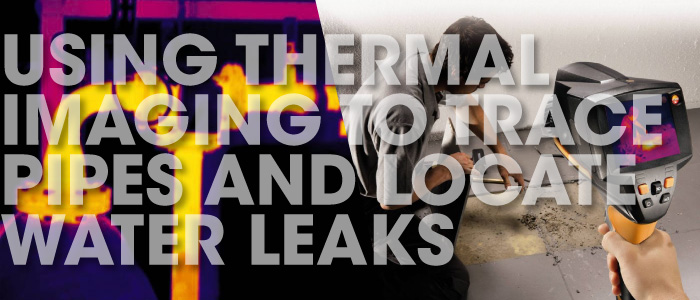
The presence of leaks in hot water systems is often first indicated by low boiler pressure or a constant need to top up the boiler, meaning that there is very little clue as to the location of a leak before investigations begin. Identifying hot water pipes throughout a property and finding water leaks can be a time-consuming and labour intensive process when the system is hidden under tiled or concrete flooring. Conventional inspections lead to digging up floors which in turn results in great expenditure in terms of both materials and labour as flooring is lifted and restored. Thermal imaging provides a cost-effective, time-saving solution to these problems.
Choosing Your Thermal Camera:
With temperatures typically falling between 15˚C to 30˚C, leak location applications generally do not require extremely advanced or expensive thermal imaging equipment. We advise considering cameras with a resolution of no less than 120 x 90 pixels but ideally 160 x 120 and a thermal sensitivity of between 0.1˚C (100mK) and 0.06˚C (60mK). An easy-to-operate “point and shoot” camera such as the FLIR E5-XT, FLIR E6-XT or Testo 868 would usually be suitable although more challenging leaks may require a more advanced camera. Information on our cameras for purchase can be found on the Thermal Imaging Camera page whilst a separate page provides information on Thermal Imaging Camera Hire which often proves a great option for one-off or occasional use.
How It Works:
Whilst floors typically remain at room temperature (18˚C to 21˚C), hot water pipes tend to raise the surface temperature of the floor by approximately 4-5˚C when in operation so it is important to turn the boiler on before carrying out an inspection. A thermal imaging camera will depict heat patterns with a colour contrast which clearly shows the pipes under the floor. The majority of our cameras have an autoranging function that can seamlessly adapt to the temperature differentials detected and display these clearly on screen for quick and simple scanning. Figure 1 is a typical thermograph showing hot pipework in a bathroom.
Figure 1:
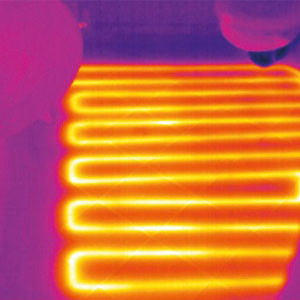
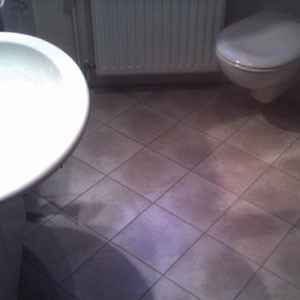
How to Locate the Leak:
Water leaking from hot water pipes will produce a distinctive thermal pattern on the surface of flooring. Whereas pipework produces a relatively sharp picture with clear differentiations between the hot pipes and cold surroundings, leaks appear as more of a splodge on the camera screen with a bright hot-spot centre and gradual gradient to the cold floor. Figure 2 shows a leak under tiled flooring.
Figure 2:
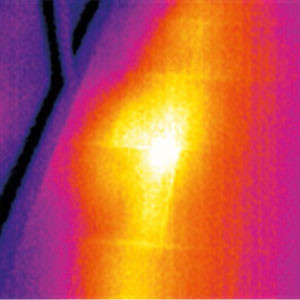
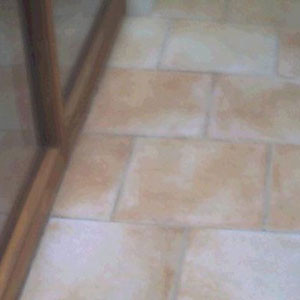
Where water leaks are hidden below multiple layers of flooring, a more powerful thermal imaging camera may be required. A higher 320 x 240 pixel resolution, such as the FLIR E8 Wifi or E76 will often be capable of showing heat patterns from pipework below carpet, rubberised underlay and up to 90mm into concrete screed. Leaks can be marked with tape for later inspection so that the thermal inspection can be carried out in one session over the whole property. This allows multiple leaks to be located before digging up flooring in order to rectify issues.
Conclusion
The benefits of using thermal imaging to trace concealed pipes and find hidden water leaks are very clear. By depicting the heat patterns of a hot water system, the user can accurately target physical intervention so that fixing leaks causes as little disruption and damage as possible. With thermal cameras available on three-day hire from just £95.00, they provide a cost-effective, speedy alternative to invasive, time-consuming conventional inspections.
